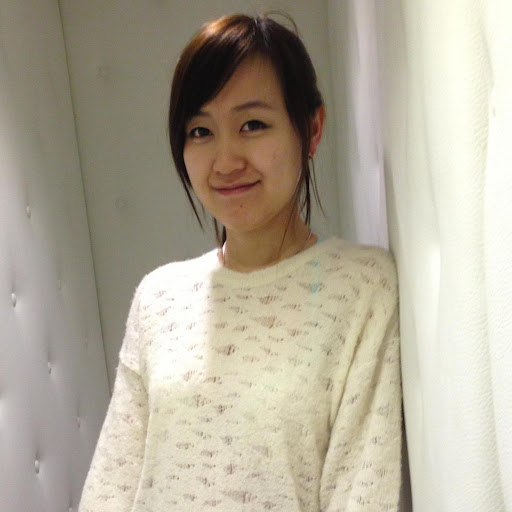Cheng P Lu
age ~72
from Plano, TX
Cheng Lu Phones & Addresses
- Plano, TX
- Dallas, TX
- Rocky River, OH
Resumes

Cheng Lu
view source
Cheng Lu
view sourceLocation:
Dallas, TX
Work:
Shanghai Lingxin Certified Public Accountants
Education:
The University of Texas at Dallas

Cheng Lu
view source
Cheng Lu
view source
Cheng Lu
view sourceLawyers & Attorneys
Us Patents
-
Predicting Overall Survival In Early Stage Lung Cancer With Feature Driven Local Cell Graphs (Fedeg)
view source -
US Patent:20220405931, Dec 22, 2022
-
Filed:Aug 26, 2022
-
Appl. No.:17/896454
-
Inventors:- Cleveland OH, US
Cheng Lu - Cleveland Heights OH, US -
International Classification:G06T 7/00
G16B 40/00
G06V 20/69 -
Abstract:Embodiments include accessing an image of a region of tissue demonstrating cancerous pathology; detecting a plurality of cells represented in the image; segmenting a cellular nucleus of a first member of the plurality of cells and a cellular nucleus of at least one second, different member of the plurality of cells; extracting a set of nuclear morphology features from the plurality of cells; constructing a feature driven local cell graph (FeDeG) based on the set of nuclear morphology features and a spatial relationship between the cellular nuclei using a mean-shift clustering approach; computing a set of FeDeG features based on the FeDeG; providing the FeDeG features to a machine learning classifier; receiving, from the machine learning classifier, a classification of the region of tissue as a long-term or a short-term survivor, based, at least in part, on the set of FeDeG features; and displaying the classification.
-
Analysis Of Prostate Glands Using Three-Dimensional (3D) Morphology Features Of Prostate From 3D Pathology Images
view source -
US Patent:20210049759, Feb 18, 2021
-
Filed:Jun 15, 2020
-
Appl. No.:16/901629
-
Inventors:- Cleveland OH, US
Can Koyuncu - Cleveland OH, US
Cheng Lu - Cleveland OH, US
Nicholas P. Reder - Seattle WA, US
Jonathan Liu - Seattle WA, US -
International Classification:G06T 7/00
G06T 7/41 -
Abstract:Embodiments discussed herein facilitate determining a diagnosis and/or prognosis for prostate cancer based at least in part on three-dimensional (3D) pathomic feature(s). One example embodiment comprises a computer-readable medium storing computer-executable instructions that, when executed, cause a processor to perform operations, comprising: accessing a three-dimensional (3D) optical image volume comprising a prostate gland of a patient; segmenting the prostate gland of the 3D optical image volume; extracting one or more features from the segmented prostate gland, wherein the one or more features comprise at least one 3D pathomic feature; and generating, via a model based at least on the one or more features, one or more of the following based at least on the extracted one or more features: a classification of the prostate gland as one of benign or malignant, a Gleason score associated with the prostate gland, or a prognosis for the patient.
-
Predicting Overall Survival In Early Stage Lung Cancer With Feature Driven Local Cell Graphs (Fedeg)
view source -
US Patent:20190279360, Sep 12, 2019
-
Filed:Feb 1, 2019
-
Appl. No.:16/265068
-
Inventors:- Cleveland OH, US
Cheng Lu - Cleveland Heights OH, US -
International Classification:G06T 7/00
G16B 40/00
G06K 9/00 -
Abstract:Embodiments include accessing an image of a region of tissue demonstrating cancerous pathology; detecting a plurality of cells represented in the image; segmenting a cellular nucleus of a first member of the plurality of cells and a cellular nucleus of at least one second, different member of the plurality of cells; extracting a set of nuclear morphology features from the plurality of cells; constructing a feature driven local cell graph (FeDeG) based on the set of nuclear morphology features and a spatial relationship between the cellular nuclei using a mean-shift clustering approach; computing a set of FeDeG features based on the FeDeG; providing the FeDeG features to a machine learning classifier; receiving, from the machine learning classifier, a classification of the region of tissue as a long-term or a short-term survivor, based, at least in part, on the set of FeDeG features; and displaying the classification.
-
Predicting Cancer Progression Using Cell Run Length Features
view source -
US Patent:20180253591, Sep 6, 2018
-
Filed:Feb 21, 2018
-
Appl. No.:15/901190
-
Inventors:- Cleveland OH, US
Cheng Lu - Cleveland Heights OH, US -
International Classification:G06K 9/00
G06T 7/00 -
Abstract:Embodiments include an image acquisition circuit configured to access an image of a region of tissue demonstrating cancerous pathology, a nuclei detection and graphing circuit configured to detect cellular nuclei represented in the image; and construct a nuclear sub-graph based on the detected cellular nuclei, where a node of the sub-graph is a nuclear centroid of a cellular nucleus; a cell run length (CRF) circuit configured to compute a CRF vector based on the sub-graph; compute a set of CRF features based on the CRF vector and the sub-graph; and generate a CRF signature based, at least in part, on the set of CRF features; and a classification circuit configured to compute a probability that the region of tissue will experience cancer progression, based, at least in part, on the CRF signature; and generate a classification of the region of tissue as a progressor or non-progressor.
-
Predicting Cancer Recurrence Using Local Co-Occurrence Of Cell Morphology (Locom)
view source -
US Patent:20180253841, Sep 6, 2018
-
Filed:Feb 19, 2018
-
Appl. No.:15/898728
-
Inventors:- Cleveland OH, US
Cheng Lu - Cleveland Heights OH, US -
International Classification:G06T 7/00
G06T 7/45
G16H 50/20
G06T 7/62
G06T 7/77
G06T 7/529
G06K 9/00
G06F 17/18 -
Abstract:Embodiments include apparatus for predicting cancer recurrence based on local co-occurrence of cell morphology (LoCoM). The apparatus includes image acquisition circuitry that identifies and segments at least one cellular nucleus represented in an image of a region of tissue demonstrating cancerous pathology; local nuclei graph (LNG) circuitry that constructs an LNG based on the at least one cellular nucleus, and computes a set of nuclear morphology features for a nucleus represented in the LNG; LoCoM circuitry that constructs a co-occurrence matrix based on the nuclear morphology features, computes a set of LoCoM features for the co-occurrence matrix, and computes a LoCoM signature for the image based on the set of LoCoM features; progression circuitry that generates a probability that the region of tissue will experience cancer progression based on the LoCoM signature, and classifies the region of tissue as a progressor or non-progressor based on the probability.
-
Radiomic Features On Diagnostic Magnetic Resonance Enterography
view source -
US Patent:20170193655, Jul 6, 2017
-
Filed:Nov 28, 2016
-
Appl. No.:15/361885
-
Inventors:- Cleveland OH, US
Cheng Lu - Cleveland Heights OH, US
Satish Viswanath - Pepper Pike OH, US -
International Classification:G06T 7/00
-
Abstract:Methods, apparatus, and other embodiments associated with predicting Crohn's Disease (CD) patient response to immunosuppressive (IS) therapy using radiomic features extracted from diagnostic magnetic resonance enterography (MRE). One example apparatus includes an image acquisition circuit that acquires an MRE image of a region of tissue demonstrating CD pathology, a segmentation circuit that segments a region of interest (ROI) from the diagnostic radiological image, a classification circuit that extracts a set of discriminative features from the ROI and that distinguishes the ROI as a responder or non-responder to IS therapy, and a CD prediction circuit that generates a radiomic enterographic (RET) score based on the diagnostic radiological image or the set of discriminative features. A prognosis or treatment plan may be provided based on the RET score.
Youtube
Plaxo

Lu Cheng
view source
Tei Cheng Lu
view source
Cheng Lu
view source
Cheng Lu
view source
Bobo Yab Cheng Lu
view source
Cheng Ho Lu
view source
Cheng Hao Lu
view source
Jia Cheng Lu
view source
Cheng Y. Lu
view sourceGoogleplus

Cheng Lu
Education:
University of Chicago - Law, Beijing Normal University - Law, Beijing Normal University - Business Management

Cheng Lu
Education:
Beijing University of Posts and Telecommunications - Information Security

Cheng Lu
Education:
London School of Economics - Gender, Media and Culture

Cheng Lu

Cheng Lu

Cheng Lu

Cheng Lu

Cheng Lu
Myspace
Classmates

Cheng Ching Lu
view sourceSchools:
Western Michigan University - Elementary School Kalamazoo MI 1979-1983
Community:
Deborah Davis, Ella Rhodeman, Robert Guy, Larry Pomeroy

Shorewood Hills Elementar...
view sourceGraduates:
Tausif Farooqi (1984-1986),
Sang hyun Kim (1985-1989),
Jim Cartwright (1959-1963),
Cheng Lu (1985-1989),
Michael Rundle (1964-1968)
Sang hyun Kim (1985-1989),
Jim Cartwright (1959-1963),
Cheng Lu (1985-1989),
Michael Rundle (1964-1968)

Long Reach High School, C...
view sourceGraduates:
Cheng Lu (2003-2007),
Kenard Wall (1999-2003),
Melissa Lacey (1999-2003),
Viridiana Espinoza (1998-2002)
Kenard Wall (1999-2003),
Melissa Lacey (1999-2003),
Viridiana Espinoza (1998-2002)
Flickr
Get Report for Cheng P Lu from Plano, TX, age ~72


![[BJ@123] BPT BJ6123C7C4D @ 123 - [BJ@123] BPT BJ6123C7C4D @ 123 -](https://i.ytimg.com/vi/LN5SW8x5qaM/0.jpg)












